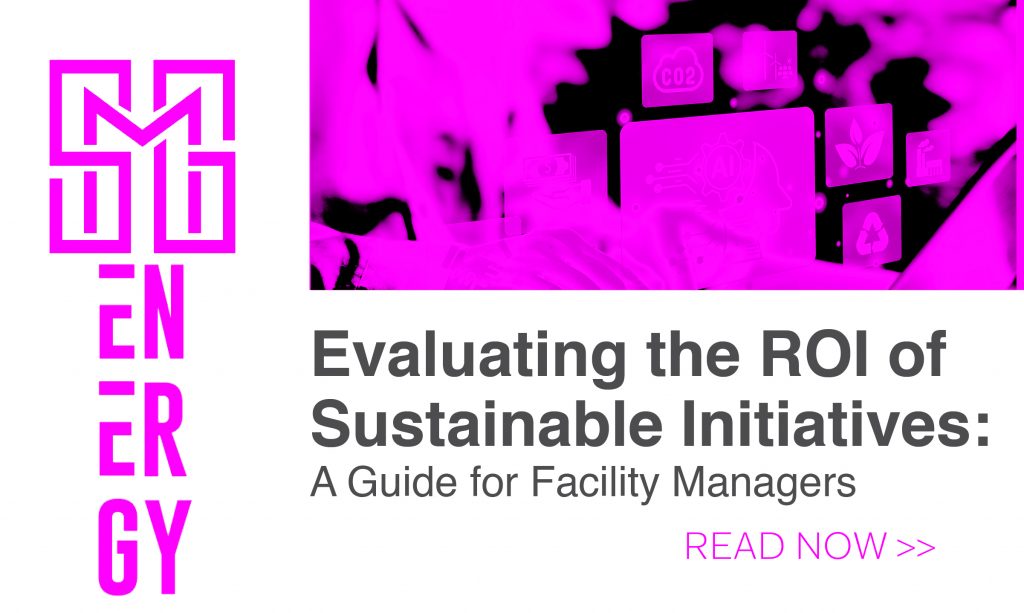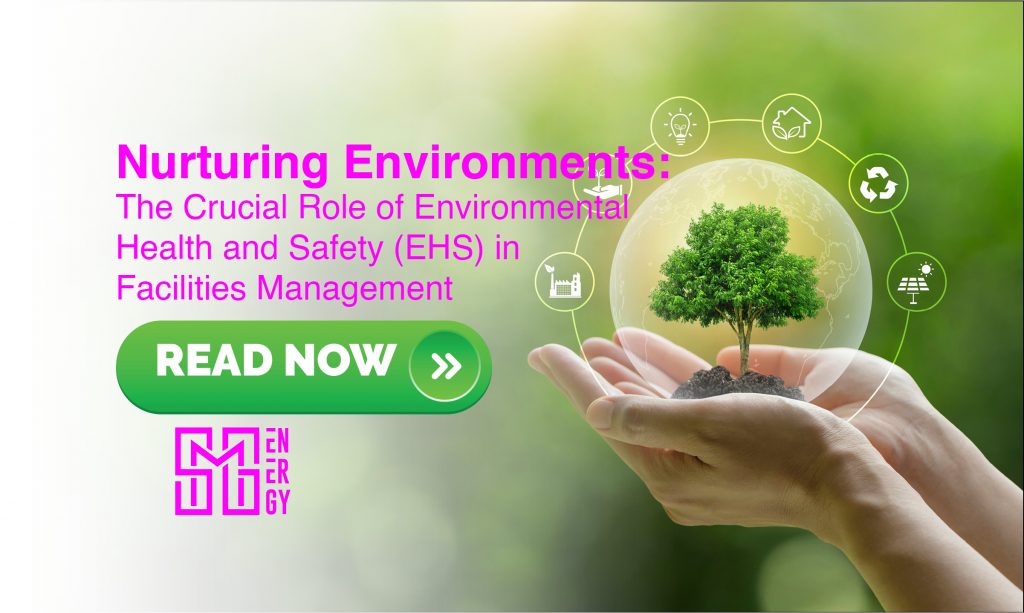In a way, corporate sustainability is about making an impact by not making an impact. In other words, it’s the approach by which you consider how your organization affects the environment and other issues — making efforts to minimize negative impact and reduce waste — so that by developing sustainable strategies, you are cultivating stronger longevity for your company. There are two areas where corporate sustainability can really factor into and affect your organization: facilities management and energy management. In this blog, we will look at both of those areas closely, their roles, what practices they can implement, and the benefits of incorporating sustainability.
The Role of Facilities Management in Corporate Sustainability
The main objective of facilities management is to ensure that all the facilities and equipment provide the best resources needed for the company to operate. But over the last few years, there has been an emphasis on considering the environment and what can be done to minimize, neutralize, or positively impact the environment. Facilities managers can play a significant role by employing sustainable facilities management practices. They can achieve this by reducing, reusing, and recycling resources to create a more energy-efficient workplace with a reduced carbon footprint.
The concerns over the climate and environment are here to stay. Businesses of all sizes should be addressing this situation. It’s something that all businesses — big and small — need to address today. This is especially true for large firms that disproportionately contribute to carbon emissions. Not only does making sustainable changes show a company stands on the side of those respecting the Earth, but it makes good business sense. When a company consistently commits to being sustainable, it raises the brand’s reputation. Clients, customers, and employees see that your company cares about the planet just as much as they do.
Facilities managers can implement several things to put their company on the path to better sustainability and a smaller footprint:
- Create and initiate a sustainability plan. First, you need to be informed. Find out what you can do to reduce the carbon footprint and increase conservation. Analyze your current sustainable efforts to determine areas for improvement. Then it’s time to assess sustainability targets and determine what it will take to reach them.
- Change out older equipment. Newer products usually have energy conservation considerations, so replacing the older ones with state-of-the-art devices means less energy use. Other minor adjustments include using energy-efficient light bulbs, installing movement sensors to gauge when lights come on, putting in better-insulated windows, and adding more or better insulation.
- Build a culture with sustainability in mind. It’s important to establish and encourage the use of efficient systems and equipment. Guidelines and strategies for all employees to follow can help raise awareness and acceptance.
- Make sure everyone knows what and how to recycle. This can mean the usual everyday items such as paper, aluminum cans, plastic, and glass, but it also covers larger-scale things like old computers and batteries.
- Focus on other areas to conserve. Completely shutting down equipment when leaving for the night, finding green partners and suppliers, using eco-friendly materials and supplies, and using natural light to save energy can all make impacts.
The Role of Energy Management in Corporate Sustainability
Energy management involves devising a plan to optimize energy consumption to reduce usage in a building or with equipment. The goals of energy management are to conserve resources, protect the climate and save money cost savings. Operations tasks include gathering and analyzing data and fine-tuning equipment schedules and flow rates to improve energy efficiency.
Effective energy management starts with knowing the exact amount of energy you currently use. With the data, you can then identify areas that can be more energy efficient. These areas of improvement can come in the production process or with changes made to the facility.
Let’s take a look at some places where you can save energy:
- Opting for more sensible climate control: Be it air conditioning or heating, there are plenty of ways to save by making the process more efficient. IoT technologies and machine learning can create a win-win situation by helping companies save significantly on costs and energy consumption. For instance, smart thermostats and/or energy management systems (EMS) allow users to program energy consumption around daily occupancy needs, and smart sensors can monitor fluctuations in real-time occupancy.
- Adopting smart lighting technology: This can range anywhere from using smart light bulbs to a complete smart lighting system run through a mobile app to motion sensor lighting. In all of those cases, smart lighting automates consumption, can adapt in real-time to changes in occupancy, and can provide another way to save energy and money.
- Adding air source heat pumps. There have been impressive advances in HVAC hardware technology that can provide companies with new opportunities to save on energy costs. Air source heat pumps, which have a low carbon footprint, can transfer heat from outside a building to inside it or do the opposite, depending on the need. (or vice versa). They can be used as energy-efficient space heaters or coolers and reduce the overload on a central HVAC system.
- Going solar: In many areas, solar power is making a significant impact. It offers two compelling possibilities — the ability to reduce the energy consumption of other sources and the possibility of selling excess production back into that overall grid.
- Employing automatic shutdown systems: These devices, such as plugs or power strips, use either infrared sensors or timers to cut power to any connected device when the device is not in use or the room is unoccupied. This can let companies save on powering devices when they are not in use.
- Using predictive monitoring: This can be extremely beneficial in identifying wasteful or hazardous trends and warning maintenance workers before the issue becomes costly. They can preemptively do maintenance to keep equipment running at its optimum levels.
- Promoting smart water management: Sometimes in getting caught up with energy savings, it’s possible to gloss over water conservation. But any reductions in the water sector are twofold — savings in water used and the energy to transfer it, and savings resulting from keeping the water at the right temperature. Low-cost water meters to monitor the flow and usage can quickly prove to be money-saving additions.
The Benefits of Incorporating Facilities and Energy Management into Sustainability Goals
So why is it worth putting a concentrated effort into tying sustainability goals into your facilities and energy management plans? Well, because of a lot of reasons. Let’s take a look at them.
Cost Savings
As mentioned numerous times above, there are a lot of ways that companies can save money by reducing their energy usage. Some of the changes require expenditures of next to nothing; others can cost money up front that may take a while to repay but are still extremely wise choices to make. In any case, what’s better than saving money and precious resources that could be in limited supply in the future?
Improved Reputation
By making efforts to further sustainability, your company gains a reputation as a business that cares about more than the bottom line. Clients see that you are a company focused on trying to be the best company you can be in all facets. It gives the image that you are not just always striving to improve your company but the world, and customer satisfaction rises.
Compliance with Rules
With more sustainability regulations appearing or being discussed as far as future implementation, it proves quite beneficial if your company has already implemented or has begun implementing the policies before they become mandatory. By being ahead of the curve, your company demonstrates a positive attitude and willingness that are not tied to the “we’re only doing this because we are being forced to” mindset.
Employee Satisfaction and Productivity
When employees see that a company is thinking beyond itself by carrying out sustainability and conservation practices, they can feel good about the fact that they are part of a business that is making a positive impact on the environment. They will feel much better about what they are doing, which will likely bolster their productivity.
SMG Can Help You Reach Your Sustainability Objectives
Corporate sustainability depends on the dedicated work of the facilities and energy management teams. There are many ways that both teams can make a difference, not only in the company’s profit margin but also in the world as a whole. Finding ways to save energy and resources is beneficial for those living today and future generations. To help with understanding, planning, and executing your sustainability goals and better align them with corporate ESG strategies, SMG Energy is just the place to plug in. As an expert in the energy management field, SMG Energy can work with you directly to provide a comprehensive and customized approach to your energy needs and do so with an eye on providing a high-value return for every client. If you are interested in dramatically reducing your energy consumption costs or improving your environmental performance and green efficiency that support a broader ESG initiative, visit our website for a free energy estimate.





